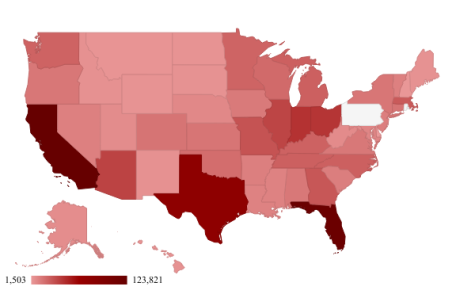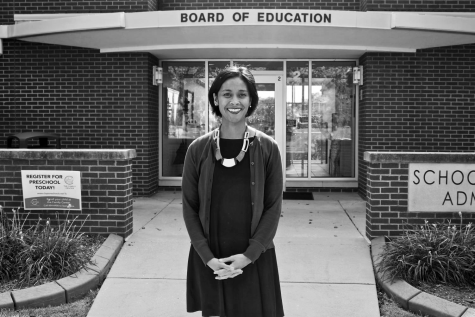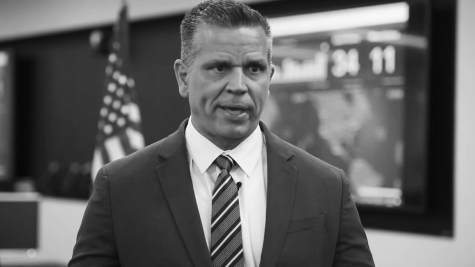“Children are Slipping Through the Cracks”
How the Missouri Department of Social Services failed its most vulnerable charges: foster children.
Image of the Missouri Capital Building in Jefferson City, Missouri.
Dominic James
Dominic James’s death was likely preventable. In the early days of summer 2002, police were called to the home of Sidney James and Stephanie Ford. According to court documents, they found Ford “drunk and belligerent” and likely arguing with James. By June 18, 2002, Dominic was taken into the custody of the Division of Family Services (DFS). Dominic could have gone to live with his father (Sidney), but DFS did not look into this, allegedly because he had once suffered a substance abuse problem (he had since undergone treatment) and lacked a stable source of income and housing. According to court documents, DFS looked into moving Dominic with his grandparents, but this proved unsuccessful for unknown reasons. Eventually, Dominic was placed in the care of John and Jennifer Dilley, a decision that would prove to be disastrous.
Not long after Dominic was placed in the care of the Dilleys, James and Ford started to notice something was off with their child. They saw multiple injuries across Dominic’s body and voiced their concerns to Alysha Friend (Dominic’s caseworker) and Kristy Hardy (Friend’s supervisor). Friend and Hardy then asked the Dilleys what caused the injuries and were told that Dominic had “tripped while running outside and that he had run into the corner of a dresser.” James was unconvinced. “I kept asking what had happened to my son, and they [Friend and Hardy] kept telling me I was overreacting. One day I told them: ‘Before you admit a flaw in children’s services, you’ll let my son die,'” he said in an interview with NCCPR (National Coalition for Child Protection Reform).
James then sent a letter to DFS voicing his concerns. According to James’s lawyer in the same NCCPR report, “they [DFS] threatened him, warning that if he kept complaining they would ship Dominic to a foster home in Kansas City, hours away, ‘and the commute [would be] the parents’ problem.'” Then on August 11th, Dominic was rushed to the hospital, unconscious, suffering from a seizure. On the way to the hospital, one of the first responders voiced concerns to DFS about potential abuse, which prompted an investigation by Charlene Valade. According to court documents in a lawsuit filed by Ford, “Valade found Jennifer Dilley’s explanations of Dominic’s injuries to be credible and did not observe any injuries that she considered to be signs of abuse.” He was later released to the Dilleys, only to return to the hospital seven days later with another seizure. Dominic would not return from the hospital this time. He died on August 21, 2002, due to “abusive head trauma, a subdural hemorrhage, and a massive bilateral retinal hemorrhage.”
In a lawsuit filed by James after Dominic’s death, the Eighth Circuit Court found that DFS “were aware of facts from which an inference might have been drawn that a substantial risk of harm existed” and that Friend and Hardy may have been “insufficiently skeptical about the Dilleys’ explanations for Dominic’s injuries.” Due to qualified immunity, however, Friend and Hardy were not liable for Dominic’s death.
Following this tragic death, Missouri Governor Bob Holden (D) ordered an investigation of the child welfare system in Greene County (the county Dominic lived in). They found, “that the child welfare system in Greene County, MO, has broken down and is ineffective.” They also noted that there was, “low morale within the system, a lack of available child advocates, a lack of family reunification efforts on the part of the DFS, and excessive workloads for social workers.” The report recommended, among other things, that caseworkers should have no more than 25 cases per person. Not long after, DFS was rebranded and promised to reform, however, many of the issues that led to the death of Dominic continue to plague Missouri’s foster children.
Foster Care
Nationwide there are more than 400,000 children in America’s foster care system on any given day. In 2019, almost 700,000 individuals were, at one time, a part of the massive, overburdened system. America’s foster care system in many places is considered to be a broken system. Many states’ foster programs have suffered due to chronic understaffing, low budgets, poor policies, and bureaucracy.

In addition to facing challenges from the people tasked with protecting them, when a child enters the foster care system, their life is changed dramatically which can cause substantial amounts of stress and other mental health issues.
“If they get split up from their sibling that causes a lot of stress because they’re constantly worrying about their little sibling or their older sibling, and that’s like literally the only sense of security and normalcy they have and now that’s been taken,” said Dr. Robyn Weins, Assistant Superintendent of Student Services at Clayton High School. “Some placements can be less apt at creating an environment for attachment… and they still need basic life needs, and sometimes those needs are not met repeatedly. Those are considered high trauma experiences.”

In addition to adjusting to a new home life and the associated challenges of starting fresh, some children “may have witnessed a lot of traumatic things,” said Weins. Put together, these individuals’ mental health is greatly harmed by their placement in the foster care system.
America’s foster care system, like many of the social services in America, is administered by individual states. As such, the care received by children in foster care varies dramatically according to what state they reside in. The Department of Health and Human Services, ultimately oversees each state but has little power to enforce standards.
In 2014, Congress sought to address some of the many issues in foster care by passing the Preventing Sex Trafficking and Strengthening Families Act. The law says that states must “expeditiously locate any child missing from foster care, determine the primary factors that contributed to the child’s running away, determine the child’s experiences while absent, including screening the childs to determine if the child is a possible sex trafficking victim.”
The Preventing Sex Trafficking and Strengthening Families Act also empowered the Office of the Inspector General of the United States Department of Health and Human Services (OIG) to look into the management of the foster care cases of individual states.
DSS
The Missouri Department of Social Services (DSS) is the executive department charged with overseeing child welfare and protection. In the past few years, the Department of Social Services has been under fire by parents, activists, employees, and lawmakers alike who claim that due to a variety of reasons, DSS has failed its most vulnerable charges: foster children.
In 2003, the National Coalition for Child Protection Reform (NCCPR) published a scathing report on the Missouri foster care system Dominic’s death. They found, “a child welfare system so overwhelmed with children who don’t need to be in it, that workers do not have time to find all of the children who do. No case gets the care and attention it deserves.”
Missouri, historically, has had a high number of children in foster care, due in part, to the focus on removing children from their parents. Missouri’s guiding principle has been to, “err on the side of the child.” This is problematic according to NCCRP which said this philosophy is, “the most dangerous words in child welfare.” They argue, “the more that workers are overwhelmed with children who don’t need to be in foster care, the less time they have to find children in real danger. So they make mistakes in both directions.”
This philosophy can also lead to children being needlessly removed from their parents or separated from siblings.
Richard Wexler, The Executive Director of NCCPR wrote in a report, “when a child is needlessly thrown into foster care, he loses not only mom and dad but often brothers, sisters, aunts, uncles, grandparents, teachers, friends and classmates. He is cut loose from everyone loving and familiar. For a young enough child it’s an experience akin to a kidnapping.”
Even in 2003, Missouri had a massive shortage of caseworkers to handle the volume of children going through the system. The policy of “erring on the side of the child” encourages a separation-first mentality which adds more children to the system burdening an already overburdened system. If this policy was not in place Dominic might be alive today.
In 2022, Missouri ranked 14th in the country with the highest number of children removed from their homes and placed into the custody of DSS. Today, there are close to 15,000 kids in the system due, in part, to the continuation of the “err on the side of the child policy.” Having this many children in the system creates substantial problems. Weins notes, “there are not enough families to take in children.” There are also not enough caseworkers and investigators to handle the caseload.
In the foster system, investigators and case managers are the cornerstones of the services provided by DSS. When a child enters the foster care system they are assigned a case manager who is designed to stay with them their entire time in the system and act as an advocate for them. In practice, however, they are overstretched and overburdened.
“I’ve been in situations with case managers where, by the time I’m invited to their best interest of determination meeting, the case manager may have just gotten this kid’s name and so they don’t know them at all like they haven’t met them personally. They just know their file,” said Weins.
When this happens, it directly impacts the children.
“We just lose the efficiency of time. They can get caught up, but it’s also relationship building, they may not have the same relationship as it is with the student as well as the school has,” said Weins.
Maura Jarboe, Children’s Advocate at St. Martha’s Hall (a domestic violence shelter) and licensed social worker said, “Before I worked here [St. Martha’s Hall], I worked at Big Brothers Big Sisters, and I can remember folks expressing that they were unsure of who they’re supposed to contact or how they follow up with people.”
Academic literature agrees. A study from Wisconsin found that the chances of a child reuniting with their family in one year decreased from close to 75% to 18% when assigned a new caseworker. Another study done by The National Association of Social Workers Foundation found similar results, “staff turnover and high caseloads result in a lack of relationships between workers and families and a limited focus on child safety while also affecting the timeliness of decisions regarding safe and stable placements.”
Covid
The COVID Pandemic changed everything as the cracks in the pipes of the system began to burst.
COVID caused Missouri’s budget to go into shortfall as state revenue decreased substantially. As a result, Missouri Governor Mike Parson (R) sought to cut jobs statewide. In his cutting package, he cut 300 jobs, 200 of which were in DSS, and of those 200, 96 were in the Children’s Division, the department charged to oversee foster kids and other forms of child abuse and neglect. Also with COVID came inflation and sharp increases in the cost of living, DSS workers, however, are some of the lowest-paid employees in the state with a starting salary of around $32,000 a year. Many employees in DSS have also reported stagnating wages.

In 2021, lawmakers sought to increase the salary of DSS employees and they successfully passed legislation to do so, however, Governor Parson vetoed this bill. Governor Parson declined to comment on this story.
The job is also notoriously demanding, often requiring long and unpredictable hours and challenging conversations.
“They [case managers] are getting pulled in all different directions,” said Weins.“Because case managers also take kids back and forth to their appointments and sometimes if a student’s in crisis, things can get really complicated. Especially if the student is really unpredictable. Case managers are human as well and don’t have any magic fairy dust to help bring more stability in situations that are really complex.”
“DFS workers have a hard job. They are never calling families with good news,” said Jaboe.
Put together, COVID caused a mass burnout event as many case managers left DSS for good, leaving the remaining case managers with dozens of cases they simply can’t handle. Some DSS regions in Missouri have reported a turnover rate of 100%.
“As of December 31, 2022 there were 185 Children’s Division positions open statewide,” said Heather Dolce, Media Director for The Department of Social Services in a statement to The Globe. “I can also offer that as of December 2022, the turnover rate for Associate Social Services Specialists was 55%.”
Dr. Shelia Powell-Walker, Social Worker at Clayton High School has dealt with backlogged case managers firsthand.

“At Clayton, I have had workers from the Department of Social Services come and see students this school year. And those workers are coming in to look at a report from back in January or February of 2022. This for reference, was in November of 2022. When I asked about the report it was because I was concerned about one of my students, they were explaining to me that they’ve had staff shortages and people have been leaving,” said Powell-Walker.
Today, at DSS, there are instances where caseworkers and investigators are being assigned nearly 80 cases per person: the report commissioned by Governor Holden in 2003 recommends no more than 25 cases per person. Above 25 cases per person, the services provided by DSS begin to falter according to that report.
In response, DSS said, “it is important to note that despite vacancies and turnover, our dedicated team members have worked together to continue to keep Missouri’s most vulnerable children safe. The Department of Social Services (DSS) continues to advertise job openings and host recruitment and hiring events to fill every position across the state. In addition, Robert Knodell, DSS Director, and Darrell Missey, Children’s Division Director, continue to work aggressively to advocate for the resources and pay needed to not only attract new team members, but also retain the dedicated team members we currently have.”
Powell-Walker sees the current case burden slightly differently.
“Workers don’t have enough time to get to all of the kids that they have. And if you think about the kids that are being referred, their needs are probably different. So there’s probably some kids who kind of have some basic things happening. But then there’s some kids who might have some pretty serious stuff happening. And those workers are supposed to determine how frequently they interact with those kids based on what the needs are. However, because of the size of the caseload, some of those kids are slipping through the cracks and aren’t getting the support that they’re supposed to get,” said Powell-Walker.
Missing and Trafficked Youth
Missouri, and by extension St. Louis, experiences the nationwide problem of missing foster children more than most other states partially due to the fact that caseworkers and investigators do not have the time or resources to check in on their charges.
“St. Louis has a high number of [runaways], shunned by their caregiver for whatever reason, and they end up in that situation where they have to make decisions to get their basic needs met that most people don’t consider,” said Jessica Wilkins, the Reducing the Risk Coordinator for the Covering House, a non-profit organization in Brentwood dedicated to providing therapy to human trafficking survivors, in a 2018 interview with The Globe.
Many of the recent issues in Missouri’s foster care system were publically uncovered by workers at OIG. “In August 2019, OIG—along with the Department of Justice (DOJ) and local law enforcement—targeted Missouri metropolitan areas to locate children who were missing from foster care,” said Katherine Harris, Senior Public Affairs Specialist in the Office of Communications at OIG. “During the operation, 23 children missing from Missouri foster care were successfully located. OIG agents involved in that operation shared concerns that prompted this evaluation.”
Eventually, OIG found, in a scathing report, “the Missouri foster care agency rarely attempted to reduce children’s risk of going missing. Additionally, it failed to protect children who went missing from foster care and did not effectively use resources to assist in locating them. As a result, these children were exposed to additional risks associated with being missing from care, such as a heightened risk for sex trafficking and poorer outcomes related to health, safety, education, and involvement in the criminal justice system.”
The magnitude of DSS’ failures came to light on June 17th, 2021, when 31 victims of human trafficking for sexual exploitation were rescued as a part of “Operation Archangel.” According to documents obtained by The Globe in a Freedom of Information Act Request, the operation began when “in March of 2021 OI-KCRO was contacted by HSI regarding an operation being planned under the name “Archangel”. The goal of this operation is to reduce human sex trafficking in Kansas and Missouri through a number of varied enforcement actions.”
The nine-day joint sting operation between more than a dozen federal, state, and local law enforcement agencies. ICE (Immigration and Customs Enforcement) in a press release said, “of the total, 14 were missing children with the youngest child being four years old and 17 were adults.”
Around one year later, in the summer of 2022, the FBI led another similar operation: “Operation Cross Country.” According to a press release put out by the St. Louis Field Office, “FBI, working with its state and local partners during two weeks in August, identified and located 84 minor victims of child sex trafficking and child sexual exploitation offenses and located 37 actively missing children during a nationwide enforcement campaign.”

In 2019 alone, 978 children went missing from the foster care system in Missouri. Many of these children were at the highest risk of running away due to a wide variety of complicating factors such as mental illness, stress, poor home conditions, and more. These individuals would likely have benefited from additional time spent by their caseworker on their individual cases.
“Children may go missing from foster care for many reasons. One of the primary reasons for which children may go missing from foster care is to gain access to friends, romantic partners, and families of origin. Children may also choose to leavetheir placements to escape restrictive rules; caregivers or other youth; bullying; boredom; or isolation. Additionally, they may be coerced or enticed to leave to gain access to drugs, alcohol, or sex,” said the report prepared by OIG on Missouri’s efforts to protect children missing from foster care.
“Kids are coming up missing because they’re lured away,” said Senator Karla May of Missouri’s fourth Senatorial District, who serves as a member of the Joint Committee of Child Abuse and Neglect. “So that’s been one of the common denominators, that children are being lured away by individuals who have met them. And they’ve considered that individual a friend and that individual is working for somebody who’s fine to move that individual away.”
Once missing, children are far more likely to end up in a wide variety of negative situations including human trafficking.
19% of reports of runaways from foster care (29% of reports involving girls and 3% involving boys) were assessed to be likely victims of sex trafficking according to NCMEC (National Center for Missing & Exploited Children).
“A lot of kids get into sex trafficking because of already being a runner. Maybe they ran and ended up having to participate in some kind of survival sex that turned into trafficking. Or maybe they keep falling back into trafficking because of the running,” Jessica Lydon, Administrative Assistant of the Covering House said in an earlier interview with The Globe. “What we deal with is a lot of inability to think clearly because of all the emotional trauma, and for them, running becomes something that is like a habit, becomes their initial response.”
Ultimately, due in part to an overburdened system, according to OIG, Missouri has failed these individuals.
“One in three of the children whose cases we reviewed, there was no documentation that the child received any required health and safety checks following the child’s return to foster care. For these children, there was no evidence that their case managers assessed their safety, determined their experiences while missing, or determined whether they fell victim to sex
trafficking while they were missing from care. During the times in which the children
were missing from care, Missouri frequently failed to comply with requirements that could have aided in locating them. Nearly half of the case files contained no evidence of Missouri reporting the children as missing, as required, to either local law enforcement or the National Center for Missing and Exploited Children. Additionally, for many missing children, there was no evidence that Missouri made the required notifications and contacts to seek information on the children’s potential whereabouts,” said the OIG report.
Solutions
There is some hope much-needed changes may happen. In 2022, Governor Parson signed into law a 7.5% pay increase for state employees, including those from DSS’ Children’s Division. Then in January 2023, Parson announced a recommendation for an additional 8.7% pay increase for the 2023 budget.
“State team members who rise each day to face the monumental task of providing vital services around the clock in congregate care settings are vital to the well-being of our state and our fellow citizens,” Acting DSS Director Robert J. Knodell said in a statement. “This recommendation will not only help us retain our dedicated team members, but will also help Missouri be a more competitive and desirable employer as a whole, ultimately allowing us to attract the additional help we need. I am incredibly appreciative of the Governor’s continued efforts to advocate for state team members to receive better compensation.”

“Our hope is that Governor Parson’s recommended wage increases for state team members, if approved by the General Assembly, will help tremendously with these efforts,“ said Dolce. “An increase in pay would not only allow Children’s Division to be a more desirable and competitive employer, but it would also help have a significant impact on employee morale and retention for our current team members who are committed to the Children’s Division and the families we serve.”
Dolce also notes that since the publication of the OIG report, “the Children’s Division has created a full-time position that is focused on missing youth, created policies to help identify children who are at risk of going missing, developed interventions to mitigate the run risk of at-risk youth, provided policy updates, practice alerts, and training to team members and adopted a human trafficking assessment.”
Missourians now can only hope that pay raises and the changes implemented by DSS are enough to fix an agency in crisis. Should DSS fail to make the necessary changes and improvements, the most vulnerable among us would bear the full burden.
A $50 or more donation includes a subscription to the Clayton High School Globe 2024-2025 print news magazine.
We will mail a copy of our issues to the recipients of your choice.
Your donation helps preserve the tangible experience of print journalism, ensuring that student voices reach our community and that student democracy thrives.

Alex Slen is a senior at CHS and is in his third year on the Globe staff. He is on the varsity cross country team, The Vice President of Competition for DECA, a STUCO member, the...

Pronouns: she/her
Grade: 11
Years on staff: 4
What's an interesting fact about you? I have two dogs.
What's your favorite movie? Crazy Rich Asians.
What do you like...

Annika is a junior and this is her second year being a part of the Globe. Annika joined photojournalism because she loves taking photos and getting involved in activities around...







